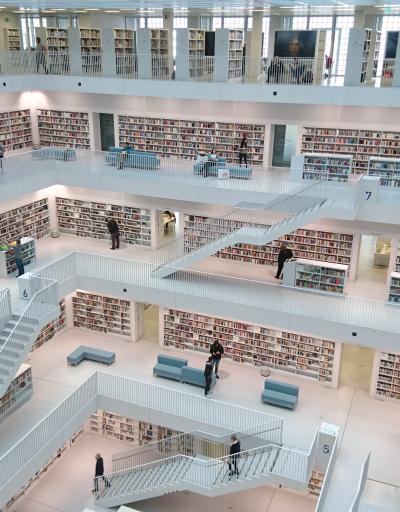
Shutterstock
Arts education: implementation of the technical high school diploma and the supplementary high school diploma in arts (organic law of culture: art. 16, paragraph a)

Where
Ecuador
Ecuador
When
2020
2020
Who
Ministry of education
Ministry of education
Website of the policy/measure
Website
Website
Read the full report
Go to full report
Go to full report
Description of the policy/measure
The ministry of education (mineduc, in spanish) is the governing body of the national education system at the elementary, middle and high school levels. the cultural policies of this body, which are framed in the 2005 convention on the protection and promotion of the diversity of cultural expressions, are: "promoting and boosting science, technology, arts, ancestral knowledge and, in general, the activities of community, associative, cooperative and private creative initiative". "the national education system shall aim at the development of individual and collective capacities and potentialities of the population, enabling learning, and the generation and use of knowledge, techniques, wisdoms, arts and culture. the system shall focus on the learner, and will operate in a flexible and dynamic, inclusive, effective and efficient way." the organic law of intercultural education (loei, in spanish) was issued in 2011 and, in 2012, its regulations were stated as a standard, both to establish the basic regulations that allowed the operation of the national education system and to deepen the rights and obligations of its actors. article 44 of the loei states that supplementary high school diplomas "are those that strengthen the training obtained in the general unified high school diploma...". there are two types of supplementary high school diplomas, the productive technical high school diploma and the artistic high school diploma. similarly, with regard to the artistic high school diploma, paragraph (b) of the same article states that: "it comprises complementary and specialized training in arts; it is formal, sequenced and progressive, and leads to the obtaining of a high school diploma of arts. this specialty, will exclusively enable the students' incorporation into the labor market, as well as the continuation of their third-level artistic studies. its regime and structure comply with the standards and curricula defined by the national educational authority." with regard to the provision of high school diplomas, the ministry of education has created two study modes in this area: supplementary high school diploma in arts (bca, in spanish) and technical high school diploma in arts (bta, in spanish.) the bca mode is in parallel to the regular basic general education and the general unified high school diploma (bgu, in spanish). the bca mode also known as art schools, comprises complementary and specialized arts training. it is formal, sequenced and progressive, and leads to the obtaining of a high school diploma in arts. this specialty, will exclusively enable the students' incorporation into the labor market, as well as the continuation of their third-level artistic studies. its regime and structure comply with the standards and curricula defined by the national educational authority." this degree enables students to enter the labor market, as well as allows them to continue their third level artistic studies (loei, 2011). these artistic high school diplomas have specialties in dance, music and plastic arts. the bta mode offers training in technical, artisanal, sports or artistic areas that allow students to enter the labor market and start social or economic entrepreneurship activities (loei, 2011). this high school diploma has specialties in music, painting/ceramics, sculpture/graphic arts, graphic design, joinery, carving and sculpture, art of peoples and nationalities. according to the data provided by the ministry of education, during 2017, 915,711 students enrolled in the general unified high school diploma (bgu, in spanish) nationwide. most of the bgu students study in public institutions (71.4%), while the remaining 19.7% and 8.9%, are enrolled in private and semi-private schools, respectively. similarly, these figures show that urban areas have the highest concentration of students at this level (82.2%.) while at the three levels, most of the students are located in urban areas, the bgu level holds a comparatively higher percentage of them. there are beneficiaries all over the country: 13,226 bgu education institutions with cultural and artistic education subjects. additionally, there are 14 education units with the technical high school diploma in arts and 14 art schools. nationwide, 3,634,525 students benefit, in total, from the implementation of this project, according to the 2018 mineduc data. according to the 2019 administrative records, there are 21 public education institutions offering the technical artistic high school diploma divided by specialization as follows: graphic design, 4; sculpture and graphic, 2; music, 9; painting and ceramics, 6; giving a total number of 21. a total of 1980 students are enrolled, according to data provided by the national high school directorate of the ministry of education.
2005 Convention Monitoring Framework Goal(s)
Area(s) of Monitoring
Cultural Domain(s)
Transversal Priority(ies)
Results achieved
* new curriculum in force since 2015 with a focus on cultural and artistic education (eca, in spanish) in general elementary education (egb, in spanish) and general unified high school diploma (bgu). in addition to the subjects of the common core, it offers additional training in technical, artisanal, sports or artistic areas that allow students to enter the labour market and start social or economic entrepreneurship activities. educational institutions offering this type of high school diploma may be constituted as production education units, where both teachers and students can receive a bonus for the productive activity of their institution. there is also the supplementary high school diploma, to strengthen the training of students who complete the bgu, considering choosing the productive technical high school diploma or the artistic high school diploma. * the artistic technical high school diploma includes complementary and specialized arts training. it is formal, sequenced and progressive, and leads to the obtaining of a degree. * preparation of guidelines for the implementation of the arts and culture curriculum.


